Here are some plants with unique and interesting Japanese names that bloomed in the Advantest biotope between April and July.
Plants that bloomed in April and May
Hebi-ichigo (Snake Strawberry)
“Hebi” is a snake, and “Ichigo” means strawberry in Japanese. Hebi-ichigo (Snake Strawberries) is a plant of the rose family and it produces yellow flowers in spring. Following the blooming stage, it produces red berries. There are various theories about the origin of the Japanese name, but it is said that the plant grows in wet places where snakes make their home. The berries are not good to eat, but are not poisonous. (English name: False strawberry)
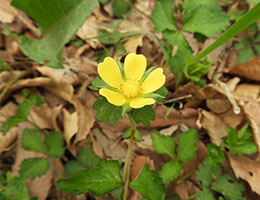
Karasu-noendo (Crow Pea)
“Karasu” is a crow, and “Noendo (or Endo)” is a pea in Japanese.
Karasu-noendo (Crow Pea) is a plant of the pea family.
It is characterized by its butterfly-shaped petals.
Following the flowering stage, the plant produces pods, which turn as black as crows when they ripen. This is believed to be the origin of the Japanese name. (English name: Common Vetch)
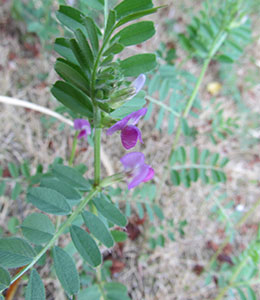
Kitsune-azami (Fox Thistle)
"Kitsune" is a fox and "Azami" is thistle in Japanese.
Kitsune-azami (Fox Thistle) is a plant of the Asteraceae family.
The flower can deceive by giving the impression of being a thistle. The name comes from the qualities of deception attributed to the fox. In the folklore of Japan, as in many countries,
foxes are believed to be clever tricksters. Thistles have thorns, but Fox Thistles do not. (Scientific name: Hemisteptia lyrata)
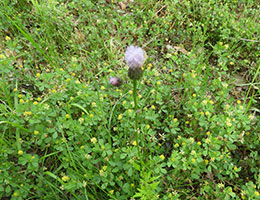
Plants that bloomed in June and July
Hotaru-bukuro (Firefly Sack)
"Hotaru" is a firefly, and "Bukuro (or Fukuro)" is a sack in Japanese.
Hotaru-bukuro (Firefly Sack) is a plant of the bellflower family, and in early summer it blooms with downward-facing, bell-shaped flowers. There are various theories about the origin of
the Japanese name, but it is said that children caught fireflies and kept them in these flowers, or alternatively, that there are Japanese regions where lanterns are called "hotaru"
(fireflies), and the shape of the flower resembles a lantern. It is a strong and vigorous plant. (English name: Chinese rampion)

Neji-bana (Twisted Flower)
"Neji" means "twisted" and "Bana (or Hana)" means "flower" in Japanese.
Neji-bana (Twisted Flower) is a plant of the orchid family, and blooms in a twisted shape. It is characterized by many small flowers with a diameter of about 5 mm, spiraling upwards
around the stem. It grows well in moist and sunny locations. (English name: Lady's tresses)
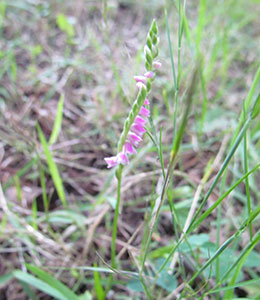
Kitsune-no-mago (Grandchild of a Fox)
"Kitsune" is a fox and "mago" is a grandchild in Japanese.
Kitsune-no-mago (Grandchild of a Fox) is a plant of the Acanthus family. It is characterized by small pink flowers blooming on the narrow tips of the flowers with the leaves facing each
other. There are various theories about the origin of the Japanese name, but it is said that the protruding tips of the flowers resemble the tails of fox cubs. (Scientific name: Justicia
procumbens)
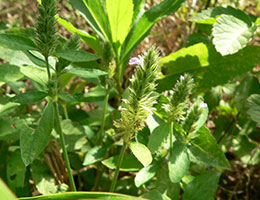
The videos of the Advantest biotope can be viewed via the "Biotope Quarterly Archive".